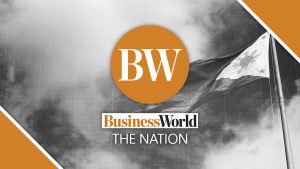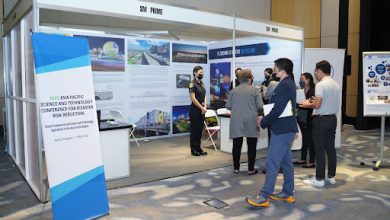Cruising through challenges

Much like a reliable SUV trekking through a bog, the Philippine automotive industry has recently been trudging along the twists and turns of the global economy, facing challenges head-on while maintaining a steady pace.
While the Philippine economy’s resilience keeps it pushing along, the obstacles are taking their toll at least on the short term. As the latest figures from the Chamber of Automotive Manufacturers of the Philippines, Inc. (CAMPI) and the Truck Manufacturers Association (TMA) reveal, the sector’s performance in March saw only a modest 1.6% increase year-on-year, clocking in at 37,474 total units from 36,880 units a year earlier. This marks the slowest growth in over two years since the 7.3% decline in February 2022.
Zoomed out, however, the first quarter of 2024 showcased a robust performance, with vehicle sales revving up by 12.7% year-on-year, reaching a total of 109,606 units. Commercial vehicle sales surged by 12.2% to 81,395 units, while passenger car sales soared by 14% to 28,211, laying the groundwork for a promising year ahead.
CAMPI President Rommel R. Gutierrez expressed confidence, affirming that the first-quarter performance positions the industry on track to achieve the conservative 2024 sales forecast of 468,300 units.
“Year-to-date sales performance was driven by sustained demand for new vehicles, supported by overall supply improvement,” Mr. Gutierrez said in a statement.
“Our first-quarter performance keeps us on track to achieve our 2024 target,” he added.
Car sales for March was attributed to factors such as elevated interest rates and fluctuating inflation rates. Commercial vehicles sales, which continued to steer the market with a significant 73% of total sales, saw an increase of 2% to 27,347 units from a year earlier. It did, however, dip by 3.8% from the previous month of February.
Amidst these fluctuations, certain segments shone brighter. Asian utility vehicle (AUV) sales surged by an impressive 23.4% to 6,421 units, providing a glimmer of optimism. Month-on-month, AUV sales inched up by 1%.
Conversely, light commercial vehicle sales slipped by 2.6% to 20,101, while sales of light trucks fell by 1.3% to 447. Sales of medium trucks dropped by 17.8% to 333 units, and the heavy truck segment plummeted by a staggering 61.5% to just 45 units, showcasing the diverse landscape within the industry.
Month-on-month, sales of light commercial vehicles, light and heavy trucks also fell by 5.3%, 13.4% and 26.2%, respectively. Meanwhile, sales of medium trucks grew by 27.6% from the previous month.
Finally, passenger car sales saw a slight increase of 0.7% to 10,127 units in March compared to a year ago. Month on month, sales of passenger cars went up by 5.1%.
Toyota Motor Philippines Corp. maintained its dominant position with a 45.3% market share, closely followed by Mitsubishi Motors Philippines Corp. and Nissan Philippines, Inc.
Cause for optimism
Earlier this year, CAMPI’s Mr. Gutierrez said that he expected a robust year for the automotive sector, proclaiming that the possibility of selling 500,000 units could be achievable.
Expectations of lower inflation and a stronger trajectory for economic growth drive this confidence. “[Selling 500,000 units] is possible. We had 21.9% growth last year. It is near 500,000 units sold,” he said.
Should this come to pass, it would signify a 16.3% annual growth over the 429,807 units that were sold in 2023. The increased estimate also coincides with CAMPI’s hopes to grow car sales by 10% to 15% this year.
“The drivers would be the tempered inflation rate and the remittances from overseas Filipino workers (OFWs),” he said.
Photo from Freepik
The Bangko Sentral ng Pilipinas (BSP) kept its benchmark rate at 6.5% during its meeting in December.
Even though it dropped to 3.9% in December, the nation’s inflation rate dropped to only an average of 6% in 2023, still higher than the 5.8% recorded in 2022. Data from the BSP indicated that between January and November of last year, cash remittances through banks increased by 2.8% to $30.211 billion from $29.38 billion.
Meanwhile, CAMPI members sold 429,807 units in 2023, up 21.9% from the 352,596 units they sold the previous year of 2022. This also surpassed the group’s revised sales target of 423,000 units for the whole year.
In 2023, sales of passenger cars increased by 27.2% to 109,264 units, whereas sales of commercial vehicles increased by 20.2% to 320,543 units. AUVs surged by 30.5%, while light commercial vehicles increased by 18.3%, drove the growth in commercial vehicle sales.
According to CAMPI, better supply circumstances for all brands, easier access to credit, and sustained customer demand were the reasons for the higher sales.
“Last year was a very strong year for the industry, and we are very excited about 2024,” Mr. Gutierrez said.
“Positive economic outlook, new model introductions and the electrification trend are expected to contribute to record-breaking sales this year,” he also said.
The slowdown in sales seen this March was affected by stubborn inflation rates, which rose for a second straight month in March to 3.7% amid rising food prices. Food inflation accelerated to 5.7%, its fastest pace in four months, mainly driven by rice.
Inflation can affect car sales, primarily by diminishing consumers’ purchasing power as the cost of living rises, leaving them with less disposable income for significant purchases like cars. Another reason is that to counter inflation, the BSP is forced to keep interest rates sufficiently tight to keep it within their 2%-4% target for 2024.
This results in higher borrowing costs for auto loans, discouraging some potential buyers or leading them to seek cheaper alternatives. Not to mention, inflation can cause a snowball effect in costs for automakers, as more expensive production costs squeeze profit margins and potentially necessitating price hikes, which could deter buyers or undermine automakers’ competitiveness.
Finally, inflationary pressures can influence consumer sentiment, prompting individuals to become more cautious about major financial commitments like buying a car, thus delaying purchases and impacting sales.
Fortunately, such concerns are expected to ease over the course of 2024, after the current El Niño ends.
“In the second half of this year, we expect the pressure from food prices to diminish, because a big part of that food inflation was imported in the sense that food prices, particularly for staple, have been rising in the world market,” National Economic and Development Authority (NEDA) Secretary Arsenio M. Balisacan said.
The Department of Science and Technology (DoST) previously stated that although the El Niño weather phenomenon is predicted to last until May, the Philippines may still be affected until August.
Mr. Balisacan noted that economic growth in the first half may be affected if inflation continues to breach the 2%-4% band.
“[It’s] a challenge because domestic consumption, particularly home consumption and investment, are very sensitive to inflation and interest rates,” he said.
“With food prices starting to come down, that should be good for growth. But of course, if the energy prices continue to rise, then it could affect logistics, distribution, and it could impact food prices too. But we hope that it will not be serious,” Mr. Balisacan said.
Due to trade limitations, price increases, and geopolitical tensions, the Development Budget Coordination Committee (DBCC) reduced its goal range for gross domestic product (GDP) growth earlier this month, moving it from 6.5%-7.5% to 6%-7% this year. — Bjorn Biel M. Beltran




